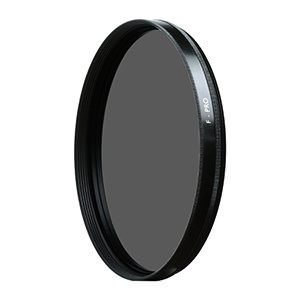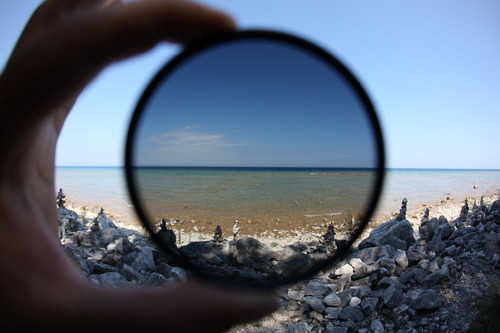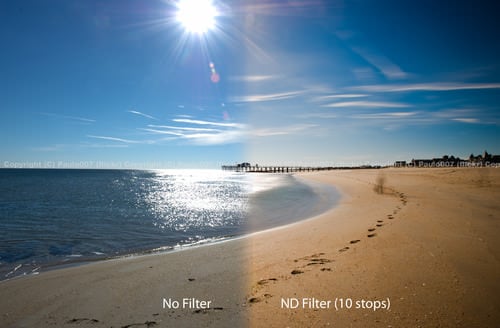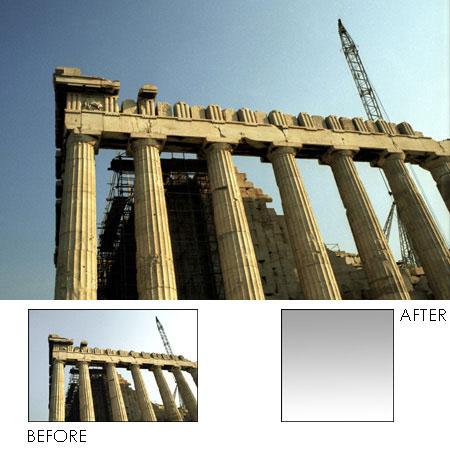- Forum
- Photography and Camera Forum
- Equipment Research, Buying and Using
- Lenses
- 3 Must Have Filters that will make any Photographers Life Easier!
3 Must Have Filters that will make any Photographers Life Easier!
-
 Topic Author
Topic Author
- PhotographyTalk
- Master of the Lens
- Followers: 270
- Posts: 1638
-
Points:
484
Post #269998
Circular polarizing filters are made for all cameras with beam splitters in the light paths of their TTL exposure meter and with autofocus lenses. Circular polarization has the same pictorial effect as linear polarization, but allows for proper exposure metering and/or autofocus distance settings.
Käsemann polarizing foils are neutral in color, have a higher efficiency than conventional polarizing foils, and are cemented between high-grade plano-parallel optical glass, using a special cementing technique that resists delamination in humid climates. The resulting sandwich is then precision-polished again to achieve highly accurate plano-parallel surfaces. Discriminating photographers regard the B+W Käsemann Polarizer as the very best polarizer on the market. They are well suited for applications that require the highest possible imaging quality, especially with high-speed telephoto lenses and apochromatic lenses.
B+W Polarizers increase color saturation and reduce reflections. The filter factor varies according to how the filter is positioned in relation to the sun. Exposure compensation is about two f-stops.
Why Use a Circular Polarizer?
Modern DSLR cameras have a beam-splitting prism that sends part of the incoming light to the meter and part to the viewfinder. The effect is that the light entering the meter is partially polarized by the beam-splitter. A linear polarizer placed on the lens of such a system will act as a second polarizer and block light to the meter by a degree dependent on the angle between the prism and the polarizer on the lens. The result is incorrect exposure/aperture values from the meter. That's why you need a circular polarizer with such cameras. The circular polarizer circumvents this problem by adding of a 1/4-wave retarder, or delay foil. This ensures that the linearly polarized light is changed into a rotation that appears unpolarized to the meter, resulting in proper exposure/aperture readings.
See B+W Circular Polarizer Filter HERE
Photo Credit: Sudhanshu Grover "sudhs"
Macknac Island, MI. Afternoon 3:30 pm. ISO 200, f/4, 1/1000, 15mm with handheld Canon 15mm Fisheye lens mounted on Canon 5D Mk II
Nikon D600 | Nikon D7100 | Nikon D800 | Nikon D5100 | Nikon D5200
__________________________________________________________________________________
B+W 77mm Neutral Density Glass Filter
B+W Neutral Density Filters attenuate the light by 1, 2, 3, 6, or 10 f-stops . This is beneficial to achieve the correct exposure when the brightness of the subject is still too high for the fastest shutter speed and the smallest aperture, or for that "cotton candy" look to streams and waterfalls.
ND.3 = 1 stop compensation. See HERE
ND.6 = 2 stops compensation. See HERE
ND.9 = 3 stops compensation. See HERE
ND1.8 = 6 stops compensation. See HERE
ND3.0 = 10 stops compensation. See HERE
Photo Credit: Paul O "hermit"
No filter (left), B&W 10 stop filter (right). Note how much warmer(yellow orange) the sand appears. Nikon 17-35mmf2.8 on a D3s, at 17mm (B&W stacked with a Hoya uv-0 filter) 1/250 at f16, iso 100 (left) 25sec at f22 iso 100 (right)
_________________________________________________________________________________
Lee Filter Graduated Neutral Density Filter
Lee 0.3 Graduated Neutral Density Filter. See HERE
Lee 0.6 Graduated Neutral Density Filter. See HERE
Lee 0.9 Graduated Neutral Density Filter. See HERE
Compatible with both digital and film photography
Whatever format you shoot, ND Grads help cameras record scenes more like we see them – with a broad tonal range that's lost if not captured in the moment.
Precise creative control
There is a place in landscape photography for both hard and soft grads. Which one you decide to use will depend mainly on the subject matter of your image.
As a general rule, a hard grad would be used for images containing a horizon, or any hard transition between the sky and the foreground - even with jagged or mountainous horizons, the exposure can be controlled far easier with a hard grad.
Soft grads perform best in woodland, mist, or interiors. Anywhere where there is no definite transition between sky and foreground, a soft grad will gently balance exposure across the image.
Ultimate flexibility
ND Grads can be stacked together, or with other filters, so you can respond to almost any lighting situation.
Recommended Cleaning Supplies:
-

- Screamin Scott
- Moderator
-
- Nikon D610, Nikon D7100, Nikon D300, Olympus OMD E-M5 MarkII, Olympus OM-D E-M10, Olympus Pen E-P3 + film SLR's
- Followers: 1384
- Posts: 6866
-
Points:
40251
Post #270019
Post #271799
- Forum
- Photography and Camera Forum
- Equipment Research, Buying and Using
- Lenses
- 3 Must Have Filters that will make any Photographers Life Easier!
Latest Reviews
The Olympus Pen E-P7 is an affordable micro four thirds mirrorless camera with 4K video capabilities, a 20.3MP sensor, and 121 focus points, making it a solid entry-level camera for beginners.
The Panasonic G9 II is a 25.2-megapixel micro four thirds camera with numerous features that make it punch out of its weight class, like 779 AF points, 5.8K video, and weather sealing.
The Fujifilm XT5 is a 40MP mirrorless camera capable of 6.2K video at 30p. With those specs, it’s an ideal choice for photographers needing a camera to pull double duty for imaging and video.
The Canon EOS R100 is an entry-level mirrorless camera introduced in 2023. But just because it’s an entry-level camera doesn’t mean it’s a bare-bones camera. Find out why in this review!
Latest Articles
In this guide to the bokeh effect, you’ll learn what bokeh is and the factors involved in creating it. You’ll also explore some beautiful example images to spark your creativity with bokeh!
Upgrade your kit in 2024 with the best intermediate camera on the market! The question is, what camera fits the bill? We’ve got three top options for you to choose from in this buyer’s guide.
The best photography jobs right now are a mix of tried-and-true gigs like wedding photography and new jobs highlighting AI’s capabilities, travel, and videography.
The Olympus Pen E-P7 is an affordable micro four thirds mirrorless camera with 4K video capabilities, a 20.3MP sensor, and 121 focus points, making it a solid entry-level camera for beginners.
Starting a photography business is one thing; sustaining your business over a long period of time is another. Use the tips in this professional photography guide to build something with longevity!
The Panasonic G9 II is a 25.2-megapixel micro four thirds camera with numerous features that make it punch out of its weight class, like 779 AF points, 5.8K video, and weather sealing.
Cinematic photography is an interesting genre that combines photographic and videographic skills along with effective storytelling techniques. The result? Highly impactful images!
Newborn photography requires skill, the right gear, and a lot of patience. This beginner’s guide discusses critical topics that will help you be more prepared for before, during, and after the shoot.


















